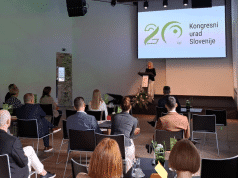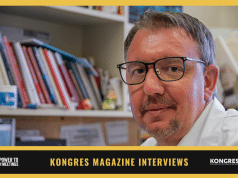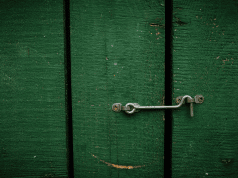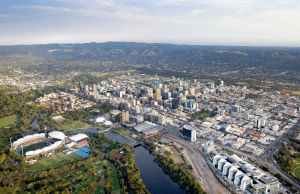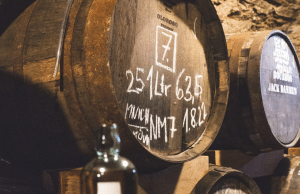WE FIRST HAVE TO PUT OURSELVES IN THE POSITION OF THE PEOPLE FOR WHOM WE ORGANIZE THE WHOLE EVENT

WAY TO BETTER MEETINGS
Q: What is meeting design and why we need to rethink the way we organise our events?
Meeting design is the art, business, and science of creating events that matter. The word “event” comprises all kinds of social situations such as conferences and conventions, where people have temporary opportunities to share or generate knowledge. And these situations should matter to those who attend the event. But here the question arises: Why do participants attend an event at all?
At first glance, it would seem easy to design an event. You have an interesting topic, a location, lively presentations, good food, vibrant networking breaks and entertaining social program. However, these situations are complex and should be designed meticulously. Take networking for example – It’s been scientifically proven that participants do not network as originally thought. They typically connect with people they already know unless specific interventions (e.g., social formats or technological tools) are implemented. Therefore, simply providing breaks for networking is not enough.
Globally, the number of events being offered has increased, while participants have less time and smaller budgets for attending them. Consequently, they are becoming very careful about selecting those events that matter most to them. If an event falls short of expectations, they won’t attend again, and it won’t take long for word to spread. In the worst-case scenario, a poorly designed event leads to dissatisfied attendees – and without participants, there is no event.
For this reason, we started an applied research project that lasted over three years to analyze the needs and expectations of event participants. We interviewed a large number of different stakeholders (participants, organizers, service providers, etc.), attended, observed, and organized various kinds of events, and tested new technology solutions. Prompted by a host of interesting and at times surprising findings, we attempted to make sense of them all. And the process ultimately resulted in a solid and tested approach to designing knowledge-intensive events.
Based on our research, we developed a new method that, first and foremost, takes into account why people attend an event. We identified nine core activities of event participants, for example: Presenting: people want to present themselves or their knowledge, or they want to represent their organization; Connecting: they are aiming to network with acquaintances or meet someone new; Inspiring: people expect to gain new insights in an unexpected manner; or Enjoying: Freed from their daily routines, participants expect delicious food and entertaining acts.
Depending on their expectations, the event design needs specific, customized solutions. In our research, we identified the most important design dimensions and solutions for creating a successful event. The architectural dimension covers the physical configurations of the venue, for example, an arena or a matchmaking space. The social dimension consists of formats that facilitate specific social interactions, e.g., icebreakers or topic cafés. And the technological dimension includes solutions for software tools or physical materials, such as profiles of participants or file sharing of event photos.
Applying this method to professional conference organizers, we figured out that team members have very different understandings about how to design an event. For this reason, we developed Event.Cards that cover all our findings with illustrated graphics. This set of cards serves as a tool-kit for designing events within an organization team in less than an hour, and the wide variety of cards inspires organizers to create meetings that rock.

Q: What is wrong with the format of meetings as we have them now?
First, many organizers fail to think comprehensively about their intended participants’ real reasons for wanting to attend their event and their needs. Unless the whole organization team has a shared understanding of the event design, the format will not satisfy their participants. Second, most meeting formats are broadly similar. Organizers are reluctant to innovate and try something new in case a different format intimidates their audience. But the opposite seems to be true. When organizers don’t try new formats that are better fits for their intended audiences, participants may not be willing to attend an event again.
Q: What would you do to make a meeting creative and powerful?
There is no “one-size-fits-all” design that meets all the different needs of participants. Therefore, we use the above-mentioned design process that includes all relevant key stakeholders to co-create the event collaboratively. Furthermore, we have developed web-based tools for specific events, for example, to facilitate networking. Participants specify their interests, and we automatically recommend interesting contacts whose interests align with theirs (www.hallisto.com). We also provide participants with a link, and they can take a photo and share it instantly with other participants (www.co-pics.com).
Q: How can venues support meeting design?
A venue comprises more than just a building. Each architectural space enables participants to interact socially in a certain way. The better venues understand the underlying cognitive and social processes they can make possible with their premises, the better they can support the meeting design itself.
Q: What’s the best way to implement meeting design for your next event?
The first step is to cognitively and emotionally understand your target group. Similar to the concepts of design thinking, we first have to put ourselves in the position of the people for whom we organize the whole event. Accordingly, we include them in the design process from the beginning. It is also a good idea to have people outside the traditional event-management business on board to discover new possibilities with fresh eyes. At best, a professional facilitator puts the design into practice by taking the social processes into account.
MEETING DESIGNER

Q: What is a meeting designer’s role?
Meeting designers have a great deal of hands-on experience with diverse events, and they have tried out different formats, technologies, and designs themselves. It helps if they have a conceptual or practical framework for thinking about all the various aspects of these complex situations. At the end, they should support and inspire organizers to develop a mental blueprint of their desired event that matters to their participants.
BENCHMARK
Q: Give us an example of one of you favourite and best-designed meetings?
In October 2016, I designed an event in Germany with the innovation managers of BENE. We used the Event.Cards to focus on what participants really want and we chose appropriate architectural, social, and technological solutions. All subsequent processes were perfectly aligned to this blueprint. We photographed the chosen Event.Cards and presented the design to all key stakeholders. In this way, the marketing raised appropriate expectations of the participants; graphic artists created logos, and the venue created specific spaces. Finally, we created a customer journey to inspire the participants.



